Mt Hopkins
Caution! We do not provide turn-by-turn directions in our GPX files. Those are auto-generated by your bike computer and are usually less than 70% accurate. Learn more.
For help loading a GPX file onto your bike computer, go here.
DownloadHighlights & Remarkable Spots
Juan Bautista de Anza National Historic Trail / @Start
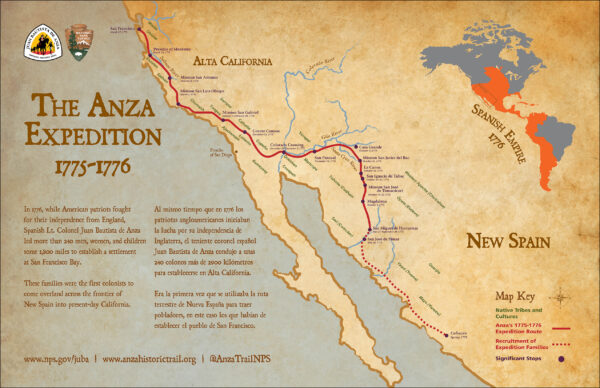
In 1774, Juan Bautista de Anza, commander of the Royal Presidio of Tubac, successfully explored a 1200 mile overland route from Sonora, Mexico, into Upper California. This expedition with 240 men, women, and children showed that it was possible to transport livestock, goods, and people overland from Sonora to new settlements in California. The Anza Trail was designated a National Historic Trail by Congress in 1990.
Whipple Observatory & Visitor Center / ~ Mile 8
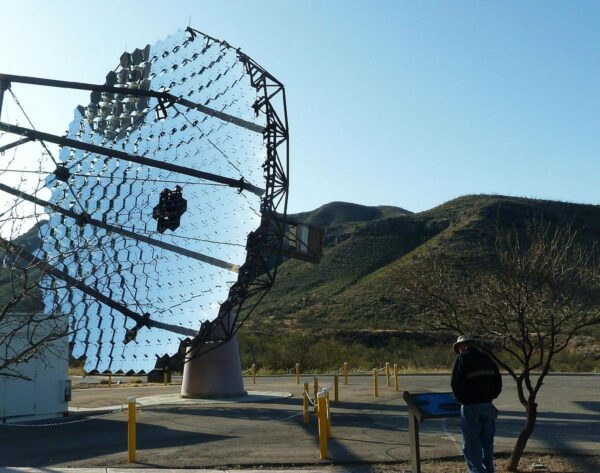
The Visitor Center has been closed since COVID and has not re-opened. However, this is the site of the VERITAS array. Several of the array telescopes are visible to your right just before the Visitor Center.
The VERITAS array, run by the Center for Astrophysics, is a place where scientists use four big telescopes, each 12 meters wide, to study space. We can’t see gamma rays from space because they don’t reach the ground; our atmosphere stops them. But when these gamma rays hit the atmosphere, they make a quick flash of blue light called Cherenkov radiation. The VERITAS telescopes look for this blue light. By studying it, scientists learn about very powerful light sources in space, like huge black holes and other extreme places in the universe.
MMT Telescope / ~ Mile 14
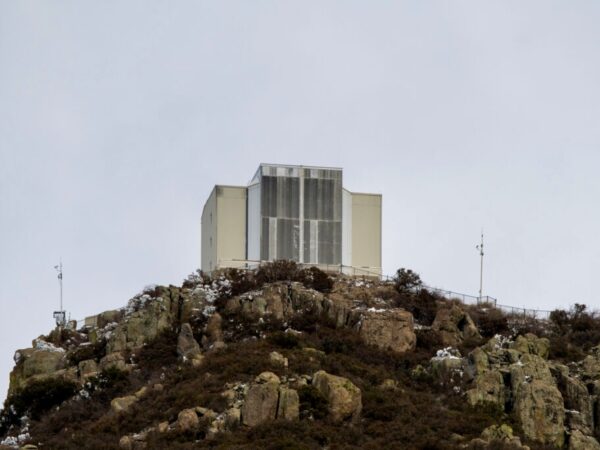
In the distance, atop of Mt Hopkins you will see a white, vertical rectangular building. This is the MMT, a large telescope built to track astronomical objects along two axis, different from all other telescopes of its era (~1979). The modern, updated version of the MMT is equipped with “adaptive optics”: a flexible secondary mirror which creates extremely sharp astronomical images by correcting for distortions created by Earth’s atmosphere.
The MMT has been used study gravitational waves, observe exoplanets, analyze star-forming regions, and study supermassive black holes.
Mt Wrightson / ~ Mile 15.5
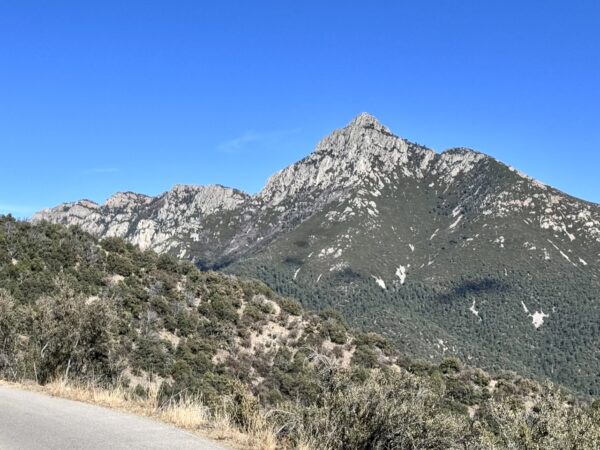
Mount Wrightson (O’odham: Ce:wi Duag) is the highest peak in the Santa Rita Mountains (a 9,456-feet). Infamously, Mt Wrightson is known for the Boy Scout tragedy of 1958. On November 15th, six scouts aged 11 to 16 were hiking the mountain when caught out in a snowstorm. 3 of them died. From this tragedy, the Southern Arizona Rescue Association was formed.
Baboquivari Peak / ~ Miles 16 to 22

“Baboquivari Peak is an important regional geographic landmark and one of the most sacred sites for the Tohono O’odham (“Desert People”) of Southern Arizona and Northern Sonora. According to the traditional religion of the O’odham, humanity emerged into the world through this holy mountain after a flood. I’itoi, the creator of the world, is believed to live in a cave within the mountain from which he watches over his people today. The image of I’itoi – depicted in Tohono O’odham art as a man in the middle of a circular maze – is popular throughout the Arizona-Sonora border region. The maze represents not only the path to reach I’itoi within his cave at Baboquivari but also the decisions a person makes throughout their life path.” [Nomadic Border]
Devil's Cash Box / ~ Mile 21
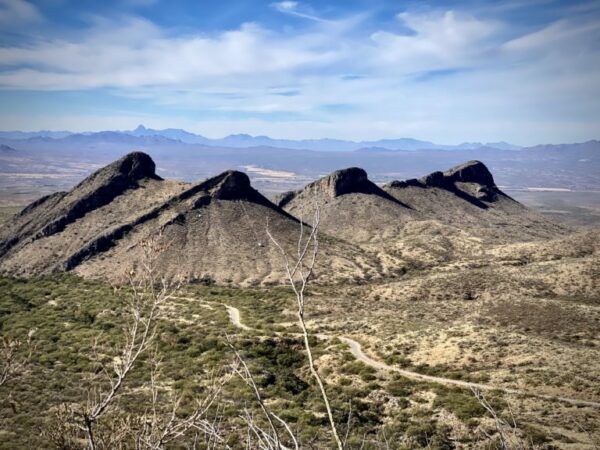
At mile 21, you get a big, explosive view of Devil’s Cash Box. A mountain with 4 distinct peaks and a geology distinct from any other mountain or hillside nearby.
~ 240 to 330 million years ago sedimentary rock was laid on the ocean floor and was later thrust to the surface by movement within the earth. The Devil’s Cash Box mountains were formed of hard sedimentary rocks like siltstone and limestone. Nearby, the softer sedimentary rock of sandstone eroded (faster) into low round hills. And to the east, the igneous, volcanic rock of the Santa Rita mountains stands tall, largely unphased by erosion. [On-site kiosk at Astronomy Vista]
Sierrita Mine / ~ Mile 27.5
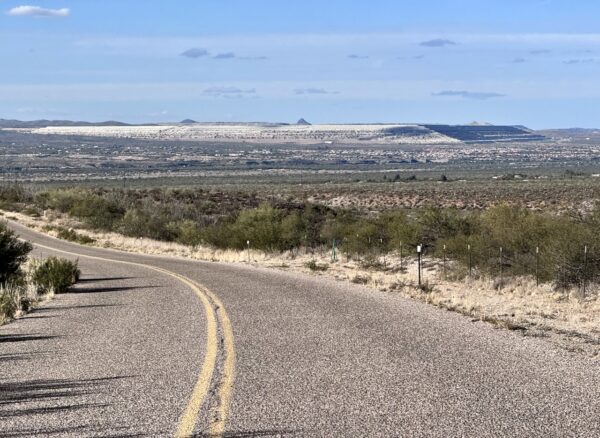
The Sierrita Mine (or sometimes known as the Duval mine) is a large copper mine located in the Sierrita Mountains of Arizona, with one of the largest copper reserves in the world. First mining claims were recorded in 1895. It was first worked as an underground mine beginning in 1907; and open-pit development began in 1957. Today the mine is owned by Freeport-McMoRan. It is estimated that in 2022 the mine had an economic impact of $463 in the state of Arizona and was responsible for 4300 jobs. (Click on image.)
When We Like to Ride This
Spring through fall. Elevations along with the route range from 3000 feet to 7100 feet. Winter may be possible but be prepared for high elevation and cool temperatures. If it has snowed recently in the mountains, the route is a no go.
Terrain & Riding
This is a go-to route of ours when in Tucson and looking for a good climb without a big drive.
The first 8 miles to the Visitor Center are paved, climbing gradually at 1 to 3%. The road is chip sealed with some frost heave cracks, good for a gravel bike. The terrain is rolling and undulating desertscrub … cactus, green brush, and a few trees.
After the visitor center, the road is mostly hard-packed gravel that twists and turns to move you higher. The desert floor gives way to tree-filled hillsides. The grades steepen to over 6%. And … the views explode! You can see mountain ranges for miles!
Near the top, the grade lessons, and the road turns back to pavement. Just after a big left bend, you come to a gate. This is your destination, albeit a bit anti-climatic but a good spot to rest and for a picture. Please go no further!
“There is no public access past the gate. There is no public automobile, bicycle, or foot traffic of any kind after this gate for any reason.” [Smithsonian Astrophysical Laboratory]
From here, everything in reverse! At first, steep gravel with twists and turns. Then more moderate gravel conditions. Then paved descending at 2 to 4% to the start/finish. Some will find the descent more challenging than the climb.
The Start
Elephant Head trail parking area.
Food & Water
- ~ Mile 8: Whipple Observatory Visitors Center
Route Notes
40 mm tires are sufficient for this ride. Most of the gravel / dirt roads are hard pack or loose over hard pack. We have seen people ride this on road bikes with 28 mm tires. Not our choice, but doable. Our preference is a 45 mm+ tire. On the way up, we go with tire pressures close to 40 psi. For the return, we air down to ~ 25 psi.
We recommend a red blinky light as there is some traffic on the paved section leading to the Visitor Center.
Note the Visitor Center has been closed to the public since early 2020 and, as of December 2023, still remains closed to the public. If you ride this route and note that the Visitor Center is open, please let us know in the comments below or send us an email.
Route Options
Shorter Option
Start at the Whipple Observatory Visitor Center (parking, flush toilets). Miles: 16 / Elevation gain: 2900 feet / Lat-Long: 31.674564, -110.949646 /
Longer Options:
(1) Add in the dogleg out and back to Devil’s Cash Box. This sector will have a more rugged feel to it, with some steep pitches near the top. Miles: 42 / Elevation gain: 6200 feet
(2) Start at the historic Canoe Ranch. Miles: 40 / Elevation gain: 4200 feet / Lat-Long: 31.795415, -111.015922 /GPX Download

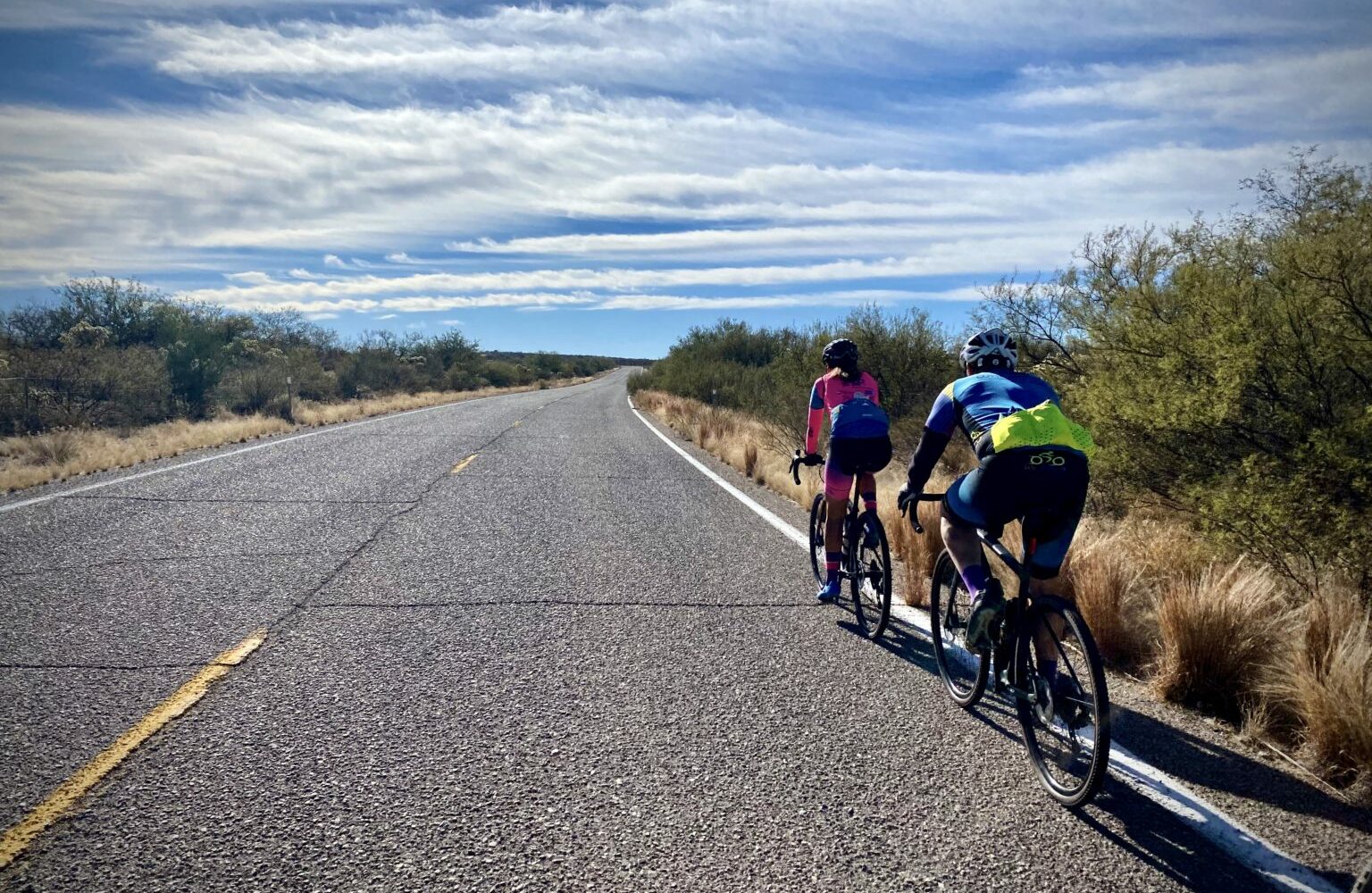

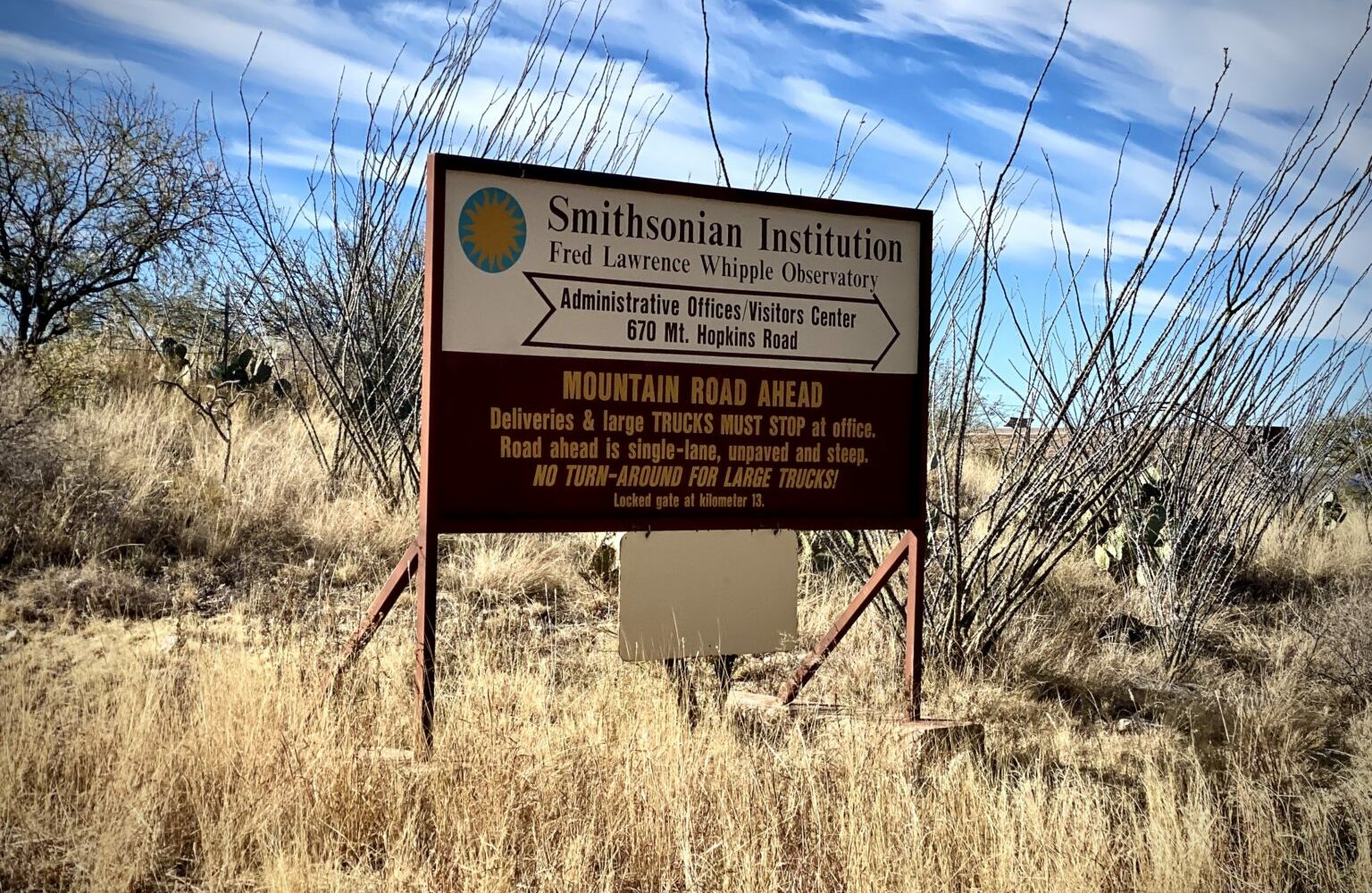
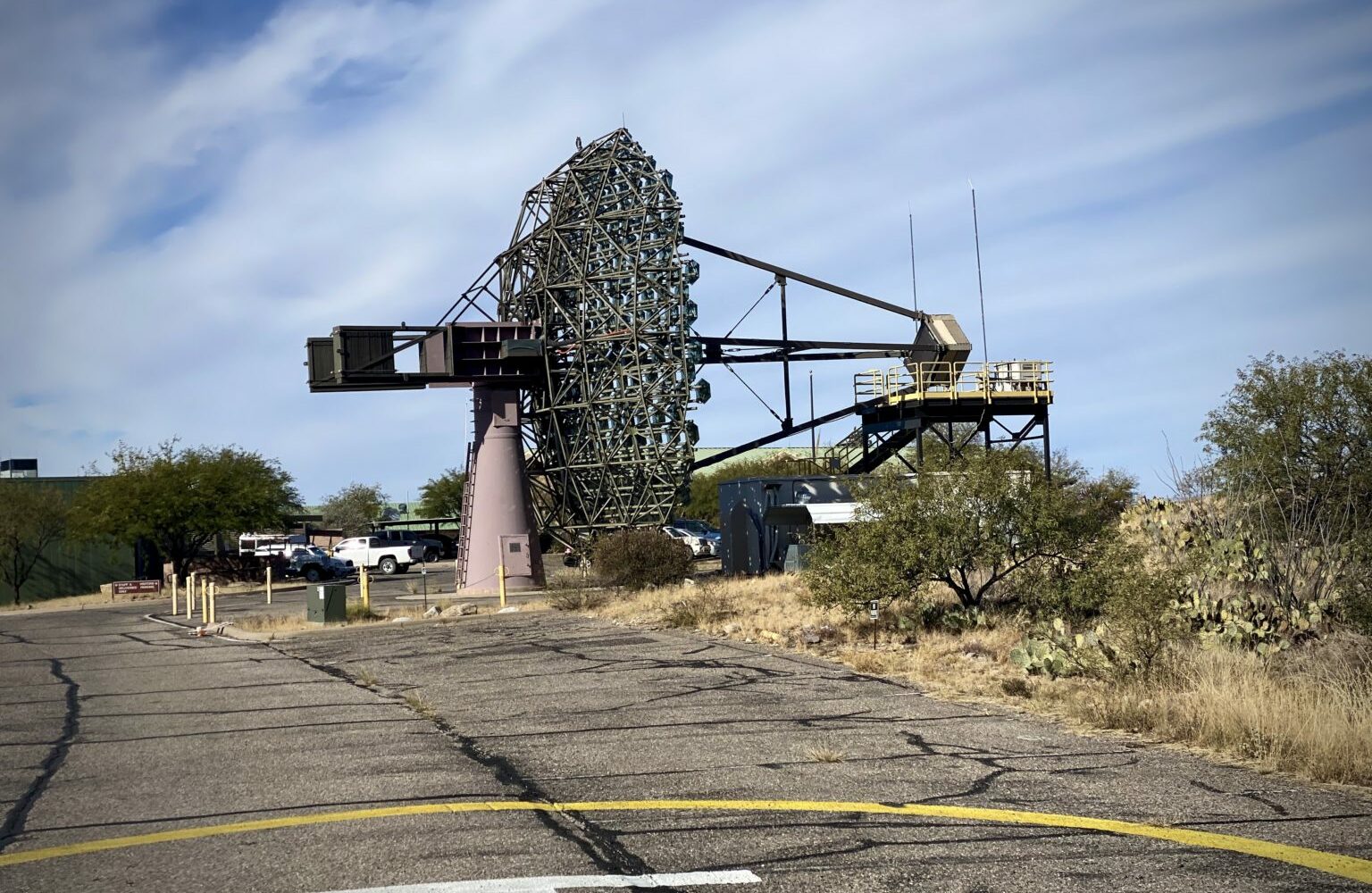











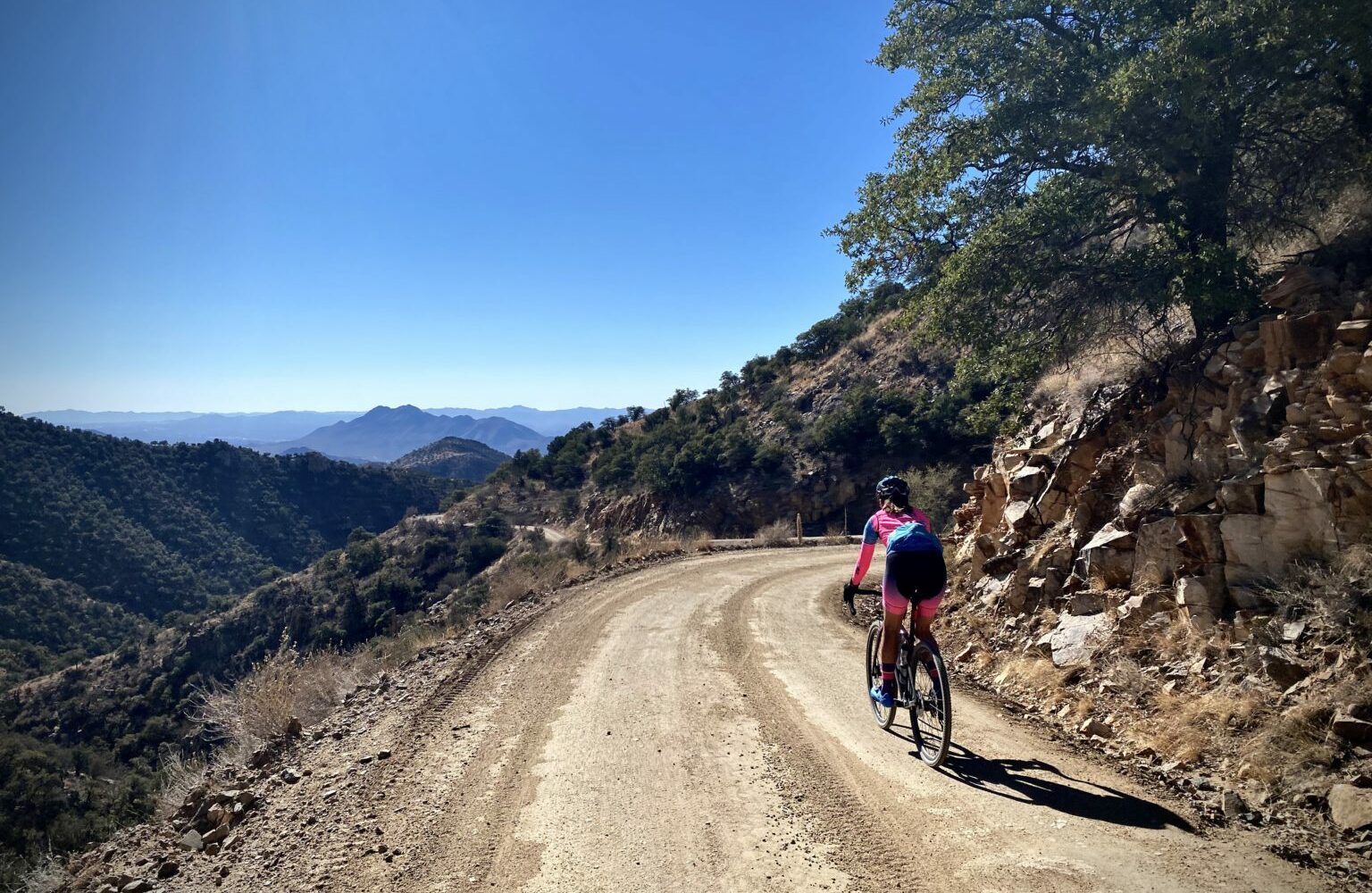





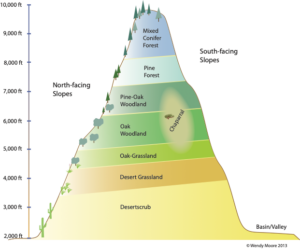


 Behind every route is scouting, mapping, storytelling, and a whole lot of pedal power.
Behind every route is scouting, mapping, storytelling, and a whole lot of pedal power.
Have you ridden this route? Got a question? Join the discussion!